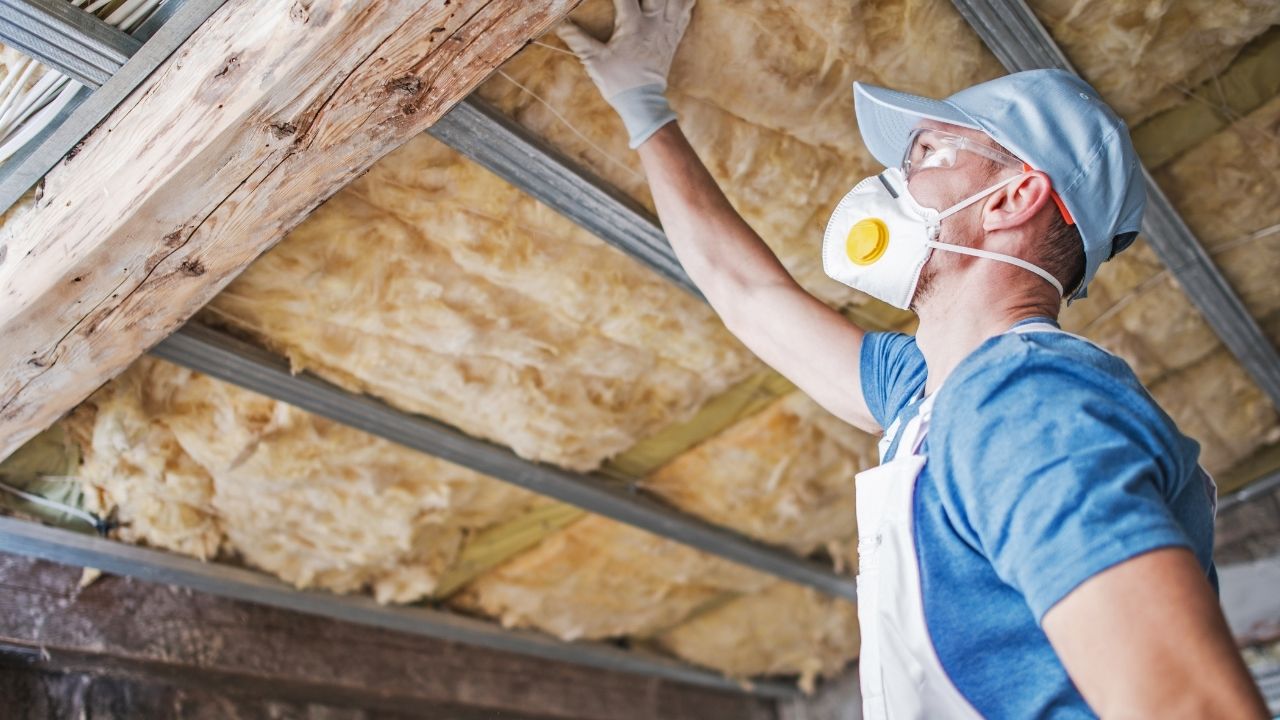
TPO roofing has been on the market for more than 20 years and is now the most popular low-slope roofing material. TPO roofs cover more than half of all single-ply roofs. They are used in over one billion square feet. This roof offers exceptional performance and long-lasting durability for a very affordable price. This roof has a heat-welded seam design which provides greater strength than taped or unwelded seams.
TPO membranes, which are 100% recyclable, are made to last at least 20 years. TPO membranes are extremely durable and require minimal maintenance. TPO membrane roofs typically only need semi-annual maintenance. TPO membrane roofs can be installed more quickly than other types of roofing material, because they are lighter and larger than other materials. TPO membrane roofs are also available in rolls measuring up to 100 ft long. This makes them easier and more manageable to install.

TPO roofs can be installed on many substrates. Most of them are compatible to EPDM. TPO can be attached with an electronic bonding system. TPO and thermoset materials can't be adhered with this method so you should choose another method. An electromagnetic induction welding system is an option if the membrane's adhesive strength is a concern. When applied to metal or concrete, a low temperature adhesive is most effective.
TPO is a great choice for commercial roofing as it is more cost-effective than traditional commercial roofing systems. It saves money and is more cost-efficient than other commercial roofing systems. TPO projects can cost anywhere from $5.50 to $7.50 a square foot depending on the scope and method of installation. The final cost of a TPO project will be affected by the thickness of its membrane (60 - 80 mils), its backing material (standard and fleece-backed reinforced), or the method of installing it. TPO roofs can also be applied with automated hot-air welding, which significantly reduces labor costs.
TPO blood testing is safe but comes with some risks. It is possible to have a difficult time finding a good blood vessel because the test is performed on the arms. It is possible that the technician may have to repeat the procedure several times in order to find a good match. The result will be shown as a numerical number that can be compared with a reference range. TPO blood levels may be reported as numeric values, which can be downloaded.

TPO is a very low-slope roofing option. It is both durable and energy efficient. It has been a popular choice in the roofing industry, accounting for more than half of single-ply roofs. It's a great choice due to its durability and energy efficient. TPO does have one downside: you need to see a surgeon. TPO has its risks, but it's a simple, safe, cost-effective, and affordable solution.
FAQ
How should home renovations take place?
The first thing you need to do when renovating your home is to decide where you want to put everything. You should consider how you want to market your home to potential buyers if you are planning to sell your house soon. Next, think about how you want your living space, including the kitchen, bathroom and living room. After you have selected the rooms you wish to renovate you can begin searching for contractors who specialize. Finally, once you have hired a contractor, you should begin working on your renovation project.
You can live in a house while it is being renovated.
Yes, I am able to live in a house and renovate it.
You can live in a house that is being renovated while you are renovating it. The duration of the construction works will affect the answer. If the renovation process lasts less than 2 months, then yes, you can live in your home while it's under construction. You can't live there if your renovation project takes more than two months.
It is important that you do not live in your home during major construction. There is also the possibility of dust and noise pollution from the heavy machinery at the job site.
This is especially true if you live in a multi-story house. This is because the vibrations and sound created by construction workers could cause serious damage to your property.
As I mentioned before, while your home is being remodeled, you'll have to manage the inconveniences of living in temporary shelters. You won't have all the amenities of your home.
When your dryer and washing machine are in repair, for example, you won't have access to them. In addition to the unpleasant smells of chemicals and paint fumes, you will have to endure the noises made by workers.
All these things can lead to anxiety and stress in your family. To avoid becoming overwhelmed by these situations, it's important to plan ahead.
It is important to research before you start renovating your house. This will help you avoid costly mistakes down the road.
A reputable contractor can also be of assistance to you in order to make sure everything runs smoothly.
How do I select a competent contractor?
Ask family and friends for referrals when looking for a contractor. Also, look at online reviews. Check to make sure the contractor has experience with the type of construction you are looking for. Request references and make sure to verify them.
Statistics
- They'll usually lend up to 90% of your home's "as-completed" value, but no more than $424,100 in most locales or $636,150 in high-cost areas. (kiplinger.com)
- It is advisable, however, to have a contingency of 10–20 per cent to allow for the unexpected expenses that can arise when renovating older homes. (realhomes.com)
- Rather, allot 10% to 15% for a contingency fund to pay for unexpected construction issues. (kiplinger.com)
- Design-builders may ask for a down payment of up to 25% or 33% of the job cost, says the NARI. (kiplinger.com)
- ‘The potential added value of a loft conversion, which could create an extra bedroom and ensuite, could be as much as 20 per cent and 15 per cent for a garage conversion.' (realhomes.com)
External Links
How To
How can I plan a complete house remodel?
Planning a whole house remodel requires careful planning and research. Before you start your project, there are many factors to consider. The first thing to do is decide what kind of home renovation you want. There are several categories you can choose from, such as bathroom, kitchen, bedroom, living area, and so on. Once you have decided which category you wish to work in, you will need to determine how much money you have to spend on your project. If you are new to working in homes, budget at least $5,000 for each room. If you have some previous experience, you may be capable of getting away with a lower amount.
After you have determined how much money you have available, you can decide how big of a project you would like to undertake. You won't be capable of adding a new floor, installing a countertop, or painting the walls if your budget is limited to a small remodel. You can do almost everything if you have enough cash for a full-scale kitchen renovation.
Next, you need to find a contractor who is experienced in the type project that you want. This will ensure you get quality results and save you a lot of hassle later. After finding a good contractor, you should start gathering materials and supplies. Depending on the project's size, you may have to buy all of the materials from scratch. However, it is possible to find everything you need in a variety of shops that sell premade items.
Now it's time for you to start planning. First, you'll want to draw up a rough sketch of where you want to place furniture and appliances. Then you will design the layout. You should leave enough space for electrical outlets and plumbing. Also, try to put the most used areas near the front door so that visitors can easily access them. Last, choose the colors and finishes that you want to finish your design. Keep your designs simple and in neutral tones to save money.
Now it's time to build! Before you start any construction, be sure to check the local codes. Some cities require permits. Other cities allow homeowners without permits. Before you can begin construction, remove any walls and floors. Next, you'll need to lay plywood sheets in order to protect your new floors. You will then attach or nail pieces of wood together to make the cabinet frame. Finally, attach doors to the frame.
When you're done, you'll still have a few finishing touches to do. Covering exposed pipes and wires is one example. This can be done with plastic sheeting and tape. You'll also want to hang pictures and mirrors. Be sure to tidy up your work space at all costs.
If you follow these steps, you'll end up with a beautiful, functional home that looks great and saves you lots of money. Now that you have a basic understanding of how to plan a house remodel, it's time to get started.